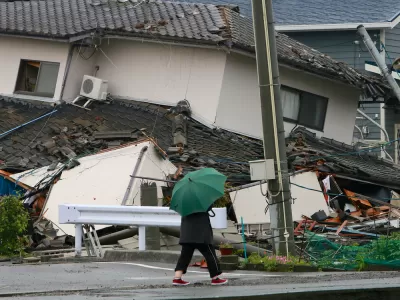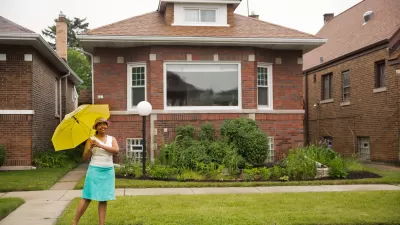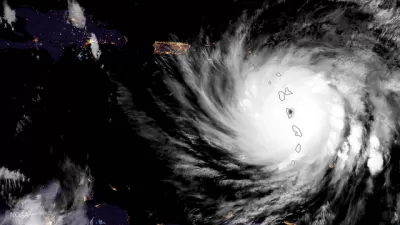Resilience to the impacts of climate change and other forms of natural disaster will require new levels of safety in the built environment.

Advances in construction technology have allowed engineers to design buildings to be taller and more elaborate than they have ever been before.
However, taller doesn't always mean safer or more structurally sound, especially in the event of an earthquake or another natural disaster. Climate change is making already catastrophic natural disasters even more powerful, with drought, heat waves, wildfires and hurricanes damaging buildings and making them more prone to failure.
What can city planners and engineers to do help improve structural safety in existing buildings, as well as improve future projects to protect them against these disasters?
Climate Change and Natural Disasters
We've already witnessed some of the damage climate-change-powered natural disasters can do. The 2017 hurricane season was an eye-opening example of that.
The three big named storms of 2017—Harvey, Irma and Maria—took three of the top five spots for costliest hurricanes of all time, with Harvey coming in second, Maria third, and Irma fifth. Those three storms even managed to bump Hurricane Andrew, one of the most famous hurricanes ever, out of the top five.
Hurricanes aren't the only disaster that is gaining strength and severity due to climate change. Droughts are intensifying wildfires and burning more acreage. Record-breaking heatwaves are melting asphalt and damaging infrastructure.
Some science even suggests melting ice caps and changing atmospheric conditions could be contributing to an increase in earthquakes and volcanic activity, like the devastating eruption from Mount Kilauea in Hawaii recently.
While some of these changes are obvious, others—like more earthquakes—may not start making an appearance until well into next century.
With this much forewarning, we've got plenty of time to start reinforcing infrastructure and making changes to engineering and architecture to ensure the buildings of the future will stand strong against these disasters.
Earthquake Proofing
Traditionally constructed bridge supports, also known as bridge bents, are made from “cast-in-place” concrete — each piece of the bent gets poured and cast in place. This technique enables each section of the bent to fit together seamlessly, but can take an extended amount of time, because the construction crew must wait for the concrete to cure before they can add the next piece.
New techniques for creating pre-stressed, post-tension reinforced concrete are allowing engineers to design bridges that can be assembled much faster than traditional casting techniques. These bents also suffer less damage by contorting, but not cracking, during an earthquake.
Permeable Concrete
Hurricane Harvey didn't just cause damage with winds or storm surge. Once the storm made landfall, it dumped record rainfall onto the Houston area over the course of a few days, leaving downtown Houston under multiple feet of water.
While the storm was obviously the cause of the flooding, the city's infrastructure and land use decisions played a large part in how much the city flooded, and where. Houston's sprawling metropolis is largely made from concrete and asphalt—non-permeable structures that don't allow water to penetrate into the ground.
China has started work on "sponge cities" — areas primarily made of materials that help stormwater get absorbed back into the ground, rather than contributing to flooding. As our global population continues to grow, engineers need to be aware of this problem, especially with flooding risks increasing in the northern United States due to climate change.
Hurricane Infrastructure
When Hurricane Irma hit Florida in 2017, more than 16 million people in the state lost power, many for multiple days. This power loss cost the lives of 14 retirement home residents who couldn't withstand the heat that returned once the storm passed.
When Hurricane Maria hit Puerto Rico, the powerful winds wiped out most of the island's power grid, a devastating blow that has left many residents without electricity — even to this day.
After Hurricane Andrew in 1992, Florida updated statewide building codes to require all homes to be able to withstand winds up to 111 miles per hour, or a low-end Category 3 storm. Homes in high-risk areas must able to withstand wind speeds of up to 130 miles per hour, or a Category 4 storm. Unfortunately, these rules don’t apply to any homes built before 1992.
With increasingly strong storms becoming a possibility, engineers need to focus on changes to existing infrastructure to enable them to survive these massive storms that could be brewing in the future.
Climate change isn't going away, no matter what the current presidential administration would like you to believe.
It's up to us to take steps to make changes to engineering and architecture to ensure homes and buildings can stand the test of time — and whatever Mother Nature can throw at them.

Alabama: Trump Terminates Settlements for Black Communities Harmed By Raw Sewage
Trump deemed the landmark civil rights agreement “illegal DEI and environmental justice policy.”

Study: Maui’s Plan to Convert Vacation Rentals to Long-Term Housing Could Cause Nearly $1 Billion Economic Loss
The plan would reduce visitor accommodation by 25% resulting in 1,900 jobs lost.

Why Should We Subsidize Public Transportation?
Many public transit agencies face financial stress due to rising costs, declining fare revenue, and declining subsidies. Transit advocates must provide a strong business case for increasing public transit funding.

Wind Energy on the Rise Despite Federal Policy Reversal
The Trump administration is revoking federal support for renewable energy, but demand for new projects continues unabated.

Passengers Flock to Caltrain After Electrification
The new electric trains are running faster and more reliably, leading to strong ridership growth on the Bay Area rail system.

Texas Churches Rally Behind ‘Yes in God’s Back Yard’ Legislation
Religious leaders want the state to reduce zoning regulations to streamline leasing church-owned land to housing developers.
Urban Design for Planners 1: Software Tools
This six-course series explores essential urban design concepts using open source software and equips planners with the tools they need to participate fully in the urban design process.
Planning for Universal Design
Learn the tools for implementing Universal Design in planning regulations.
Caltrans
Smith Gee Studio
Institute for Housing and Urban Development Studies (IHS)
City of Grandview
Harvard GSD Executive Education
Toledo-Lucas County Plan Commissions
Salt Lake City
NYU Wagner Graduate School of Public Service






























